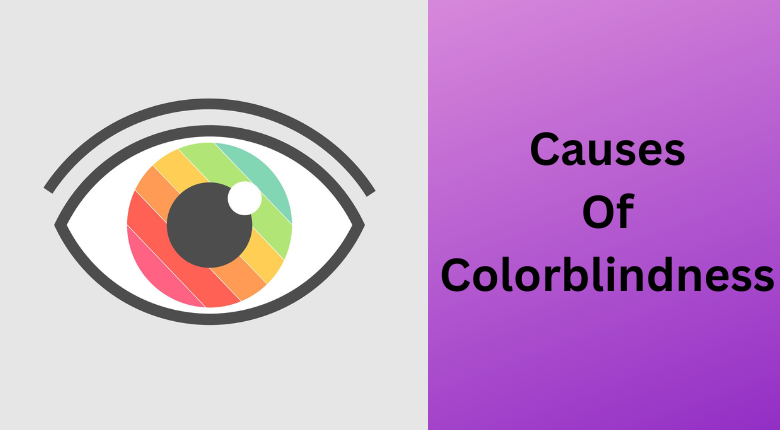Myths And Facts About Colorblindness
What Is Colorblindness?

Colorblindness is a condition that affects a significant number of individuals worldwide. It is often misunderstood, leading to various myths and misconceptions surrounding the condition.
In this article, we will explore the myths and facts about colorblindness, shedding light on the truth behind this visual impairment.
Color blindness, also known as color vision deficiency, is a condition in which an individual has difficulty distinguishing certain colors. It occurs when the photoreceptor cells in the retina, responsible for detecting color, do not function properly.
Consider taking a Colorblind Test to assess your color vision. These tests can help identify any color vision deficiencies you may have, providing valuable insight into your visual perception.
This can result in an inability to perceive specific colors or a reduced ability to differentiate between them.
Types Of Colorblindness

Colorblindness can manifest in different forms, each with its unique characteristics. The most common types include:
- Protanopia: People with protanopia have difficulty distinguishing between red and green colors.
- Deuteranopia: Deuteranopia affects the perception of green and red colors, making it challenging to differentiate between them.
- Tritanopia: Tritanopia affects the ability to perceive blue and yellow colors accurately.
Causes Of Colorblindness

Color blindness, also known as color vision deficiency, is a condition in which a person has difficulty distinguishing certain colors.
This condition is primarily caused by abnormalities or defects in the specialized cells in the retina called cones. Cones are responsible for perceiving and interpreting different colors.
The most common cause of color blindness is an inherited genetic mutation. This mutation affects the genes responsible for producing the photopigments in the cones.
Photopigments are light-sensitive pigments that allow cones to perceive different wavelengths of light and translate them into color perception.
Myths And Facts About Colorblindness

1. Only Men Can Be Colorblind
While colorblindness is significantly more common in men, this condition can affect women. Roughly 1 in every 200 women has some level of color deficiency.
Colorblindness affects a higher percentage of men compared to women. This is because the genes responsible for color vision deficiency are located on the X chromosome.
Since men have one X chromosome and one Y chromosome, if the X chromosome they inherit carries the colorblindness gene, they are more likely to develop the condition.
Women, on the other hand, have two X chromosomes, so they have a backup X chromosome that can compensate for the affected one.
2. All Colorblindness Is The Same
Colorblindness is not a singular condition with a one-size-fits-all experience. In reality, there are different types and degrees of color vision deficiency, each with its own characteristics and impacts on an individual's perception of color.
- Deuteranomaly: Green looks redder
- Deuteranopia: Green blindness
- Protanomaly: Red looks greener
- Protanopia: Red blindness
- Tritanomaly: Blue and green look alike; red and yellow look alike
- Tritanopia: Blue/green, purple/red, and yellow/pink look alike
- Monochromacy: You don’t see color at all
Within each type of colorblindness, there can be a range of severity. Some individuals may have a mild color vision deficiency, where they can still discern most colors but may struggle with specific shades or variations.
Others may experience a more pronounced impairment, making it challenging to differentiate between a wider range of colors.
3. Colorblindness Is No Big Deal
Colorblindness may sometimes be perceived as insignificant or inconsequential, but this belief overlooks the genuine impact it can have on individuals and their daily lives.
While colorblindness is not a life-threatening condition, it can present challenges and limitations that should be acknowledged and addressed.
Color plays a significant role in our daily experiences, from reading maps and charts to interpreting traffic signals and identifying objects. For someone with color vision deficiency, these seemingly simple tasks can become more difficult and frustrating.
Colorblind individuals may struggle to differentiate between certain colors, leading to potential confusion or misinterpretation of important visual cues.
4. You Can’t Do Anything About Colorblindness
It is a common misconception that there is nothing that can be done to address colorblindness. While colorblindness itself cannot be cured or reversed, there are various strategies and tools available to help individuals with color vision deficiency navigate their daily lives more effectively.
One approach is to raise awareness and educate others about colorblindness. By promoting understanding and empathy, we can create a more inclusive environment where individuals with color vision deficiency feel supported and accommodated.
Educating teachers, employers, and colleagues about the challenges colorblind individuals may face can lead to better communication and adjustments in certain situations, such as using alternative methods to convey information.
5. Colorblindness Means Seeing In Black And White
One of the most prevalent myths about colorblindness is the belief that individuals with this condition see the world in black and white.
However, this is far from the truth. Colorblindness does not result in a complete loss of color vision or a perception limited to black and white shades.
Colorblind individuals can still see colors, but they may have difficulty distinguishing certain hues or shades. The most common type of colorblindness, known as red-green colorblindness, affects the ability to differentiate between red and green colors.
This means that individuals with this type of color vision deficiency may struggle to perceive the full range of colors within the red and green spectrum.
6. Colorblind People Cannot Lead Normal Lives
Colorblindness does not prevent individuals from leading normal lives. Although it may pose challenges in certain situations, such as distinguishing traffic lights or interpreting color-coded information, people with color vision deficiency can adapt and find alternative strategies to overcome these obstacles.
7. Colorblindness Is A Rare Condition
Contrary to popular belief, colorblindness is not a rare condition. It is estimated that around 8% of males and 0.5% of females worldwide are affected by some form of color vision deficiency.
This means that millions of people around the globe experience challenges in perceiving and differentiating certain colors accurately.
The misconception that colorblindness is rare may stem from several factors. Firstly, individuals with mild or moderate color vision deficiency may not even be aware that they have the condition.
Since they can still see colors to some extent, they may not realize that their perception is different from others. This can lead to colorblindness going undiagnosed or being mistaken for other vision issues.
8. Colorblindness Can Be Cured
Currently, there is no known cure for colorblindness. It is a lifelong condition caused by genetic factors and cannot be reversed through medical interventions.
Since it is primarily a genetic condition, it cannot be reversed through medical treatments or interventions. However, certain assistive technologies and tools are available to help colorblind individuals navigate their daily lives more effectively.
These include color-filtering glasses, smartphone apps that assist in color recognition, and modified computer displays that enhance color perception.
9. Colorblindness Is Usually Genetic
The primary cause of color blindness is genetic mutations. These mutations can be inherited from one or both parents who carry the defective genes.
In some cases, colorblindness can also result from spontaneous genetic mutations that occur during a person's development. Genetic testing can help determine the specific type and severity of colorblindness.
10. Colorblindness Can Affect Daily Life
Colorblindness can have an impact on various aspects of daily life. Tasks that require color differentiation, such as reading color-coded charts, interpreting traffic lights, or identifying certain fruits, can pose challenges for colorblind individuals.
They may need to rely on alternative methods, such as memorizing the order of lights in traffic signals or using texture or shape cues to identify objects.
Conclusion
Colorblindness is a condition that affects a significant number of individuals, and it is important to dispel the myths surrounding it. While colorblindness does not mean seeing in black and white, it can impact an individual's ability to perceive and differentiate certain colors.
Understanding the facts about colorblindness helps create awareness and fosters a more inclusive and accommodating society for those with this condition.
FAQs
Q: Can colorblindness develop later in life?
Ans - While colorblindness is primarily genetic, certain medical conditions, medications, or exposure to chemicals can cause acquired color vision deficiency.
Q: Are there any treatments for colorblindness?
Ans - Currently, there is no cure for colorblindness. However, assistive technologies and tools can aid colorblind individuals in their daily lives.
Q: Can colorblind people drive?
Ans - Yes, colorblind individuals can drive, but they may need to rely on other cues, such as the position of lights in traffic signals, to ensure safe driving.
Q: Can color blindness be detected in children?
Ans - Yes, colorblindness can be diagnosed in children through various tests conducted by eye care professionals.
Q: Are there different degrees of colorblindness?
Ans - Yes, colorblindness can vary in severity, ranging from mild difficulty in color perception to a complete inability to distinguish certain colors.
